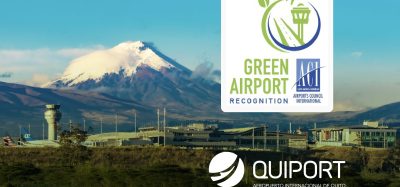New decade, new safety challenges for ANSPs
Posted: 9 June 2010 | Brendan Booth, CANSO Safety Manager | No comments yet
Safety is always the first priority of an ANSP, but increasingly there has been a shift in recent years away from safety as the sole concern of an ANSP. Airlines are focusing more on efficiency – both on the ground and in the air – and even safety itself is coming under the scrutiny of cost/benefit analysis.
In many respects, this shift is an acknowledgment of the success of ANSPs in handling safety issues. Safety is never taken for granted, but it is understood that the procedures and technology in place are effective, and the public certainly seem to be happy with the safety of air traffic control, at least in most of the developed world.
Safety is always the first priority of an ANSP, but increasingly there has been a shift in recent years away from safety as the sole concern of an ANSP. Airlines are focusing more on efficiency – both on the ground and in the air – and even safety itself is coming under the scrutiny of cost/benefit analysis.
In many respects, this shift is an acknowledgment of the success of ANSPs in handling safety issues. Safety is never taken for granted, but it is understood that the procedures and technology in place are effective, and the public certainly seem to be happy with the safety of air traffic control, at least in most of the developed world.
As ANSPs have matured, the quest to continually improve safety now has to be considered alongside the need to tackle capacity restraints, reduce emissions, increase efficiency and prevent delays, all against a background of continuing technological, institutional and political upheaval. These additional priorities challenge ANSPs to ensure that the system’s hard-won reliability is not undermined. In addition, airlines, particularly in a period when they are suffering heavy financial losses, are reluctant to pay for further investment without being sure of the business case. Finally, safety experts increasingly agree that traditional approaches to improving safety are coming up against the law of diminishing returns, so more innovative methods need to be found.
CANSO is in the forefront of developing solutions to these challenges, through its Safety Standing Committee (SSC). The Committee, which consists of safety leaders from ANSPs and invited participants, meets annually for a week-long seminar, as well as organising smaller workshops and contributing to other CANSO events.
“The CANSO SSC is a forum for safety experts to tackle problems in a collective, cooperative way” says Stephen Angus, Chairman of the SSC. “Our aim is to identify and reduce risks to the safe operation of the aviation system.” For the last three years, the CANSO Safety programme has been part of the Organisation’s ‘Imagine 2010’ strategy, and it has focused on delivering results in areas such as Safety Management and harmonised metrics. Now the CANSO SSC is developing a new work programme as part of the Association’s ‘Waypoint 2013’ strategy, which will be guiding all CANSO output for the next three years.
“As a group we are defining the best way to build on the successes of the Imagine 2010 Safety goals” continues Mr Angus. “We certainly made some progress, particularly on Safety Management Systems, Unstabilised Approaches, and on Safety Information Exchange (see side bar) but we need to take it further. It is increasingly clear that the best way to improve levels of safety will be to encourage benchmarking and comparison across our industry, and CANSO is the obvious forum to do that. For example, we need to take the work that has been done on metrics and apply that in a consistent way, across issues that really affect our customers, like runway excursion and controlled flight into terrain.”
The greater involvement of industry partners will also be a key change in the approach of the SSC over the next few years. Previously ANSPs have had a slightly insular approach to safety. Probably rightly, they felt that they needed to set up systems and procedures free from diverse inputs from stakeholders. But now, this approach needs to evolve. ANSPs are faced with a new set of parameters which requires a more collaborative outlook and which recognises the inter dependencies of what they do. They need the airlines to understand the rationale behind any changes – especially if they have implications for capacity, punctuality, and airspace efficiency – but they also need to understand the increasing need for safety to work alongside these priorities, not see itself as somehow above these issues. But the key thrust of the new strategic goals for safety will be continuity and evolution. For example, the group is expected to continue developing the Safety Management System Standard of Excellence, strengthening it with a guidance and implementation programme, and a metric to support the five-stage maturity pathway outlined in the Standard.
Hand in hand with the new strategic safety goals and the stronger collaborative approach will be a greater focus on regional implementation. As a global organisation, CANSO has a tremendous reach into some of the fastest growing aviation regions in the world, where all the interdependent issues are at their most acute. “Our regional work programmes in Europe, Asia-Pacific and the Middle East already have their own distinct objectives and way of working, and ultimately I expect we will see similar outreach in Africa and Latin America as well” says Stephen Angus. “CANSO is always sensitive to local cultural differences. We know that we are all working towards the same goals, but the journeys we make to get there will take us all along different paths.” In Europe, for example, EASA is taking the lead in aviation safety, marking a shift in the balance away from national regulators. A massive process of uniting European safety regulations under one roof is occupying ANSP thoughts in the region. In Asia-Pacific, the priorities are different, as was recently debated at the CANSO Asia-Pacific Safety Seminar in Singapore (see side bar).
A final crucial element of the CANSO safety work going forward will be the development of new policies on Just Culture. The spread of more aggressive litigation on safety issues has the potential to damage the principles of Just Culture – whereby mistakes are reported in an open, non-prejudiced manner – which have been carefully established over time. CANSO will be working closely with staff associations such as IFATCA, with industry partners and customers, and with comparable sectors such as medical practitioners, to encourage and entrench Just Culture principals. As a first step, CANSO submitted a paper on Just Culture principles to the ICAO High Level Safety Meeting at the end of March. The meeting endorsed a proposal for ICAO to establish a multi-disciplinary taskforce that should consider the interactions between safety and judicial authorities and the concept of an open reporting culture. A State letter will be forthcoming, and the establishment of this multi-disciplinary taskforce will be fully supported by CANSO.
As the new decade brings new safety challenges for ANSPs, CANSO Director General Graham Lake is clear about the way forward; “Working with industry partners is all about recognising the interdependent nature of the ANS system” he says. “It is clear that collaboration, harmonisation and con – vergence is the long term vision and I am pleased that our Safety Standing Committee is leading the way to this, as part of our Waypoint 2013 programme.”
About the Author
Brendan Booth
Brendan Booth is CANSO’s Safety Manager, seconded to CANSO from UK NATS in November 2009 to lead the safety programme and develop the future CANSO safety strategy. He has almost 11 years experience in ATM, working in operations, business and change management and latterly in safety. He also has six years experience in airport operations, including tower, approach and support functions. This was followed by a spell in business improvement, leading on projects related to the operation. Since 2007 he has worked in safety, managing the safety improvement programme and the En-route safety strategy.
The International Airport Summit is open for registration!
Date: 19 – 20 November 2025
Location: JW Marriott Hotel Berlin
At our flagship event of the year, we will dive into the future of airport operations, with expert-led sessions on passenger experience, innovative smart technologies, baggage handling, airside operations, data, security, and sustainability.
This is where global airport leaders come together to share insights, challenges, and real-world solutions.
Limited complimentary passes are available for eligible professionals – first come, first served!

















